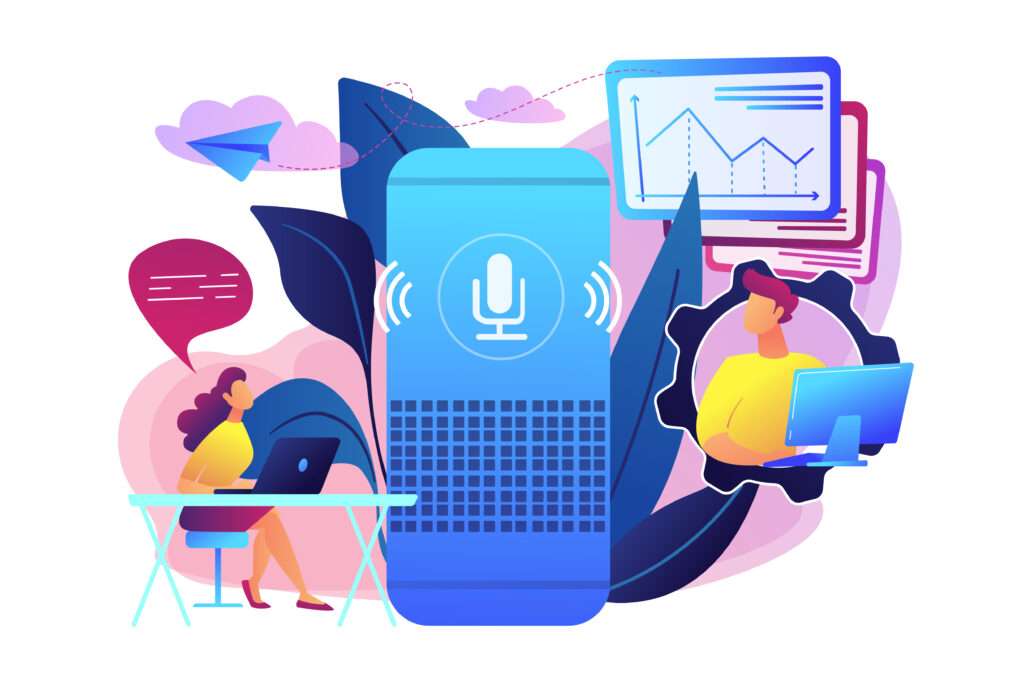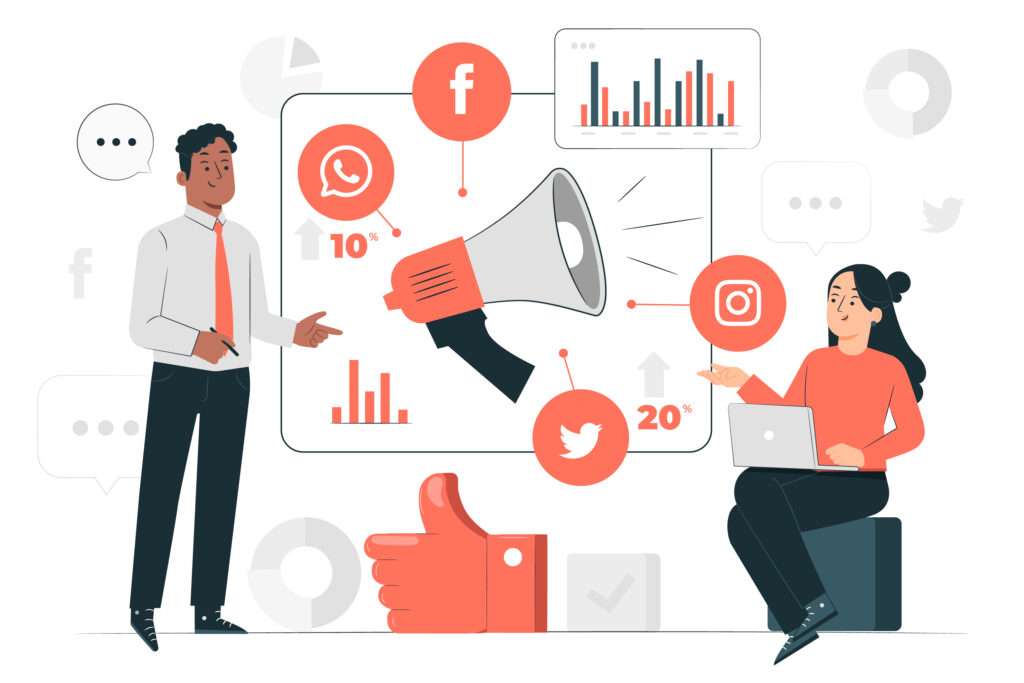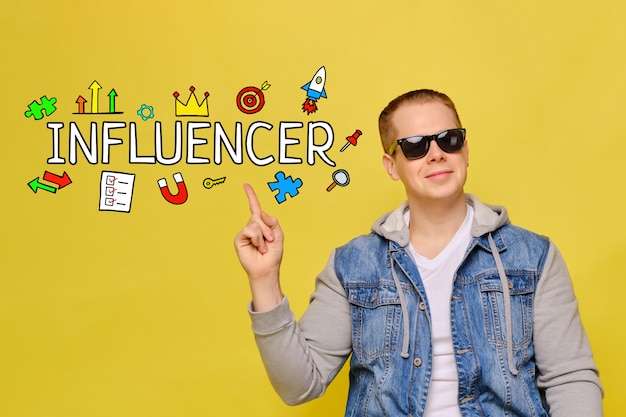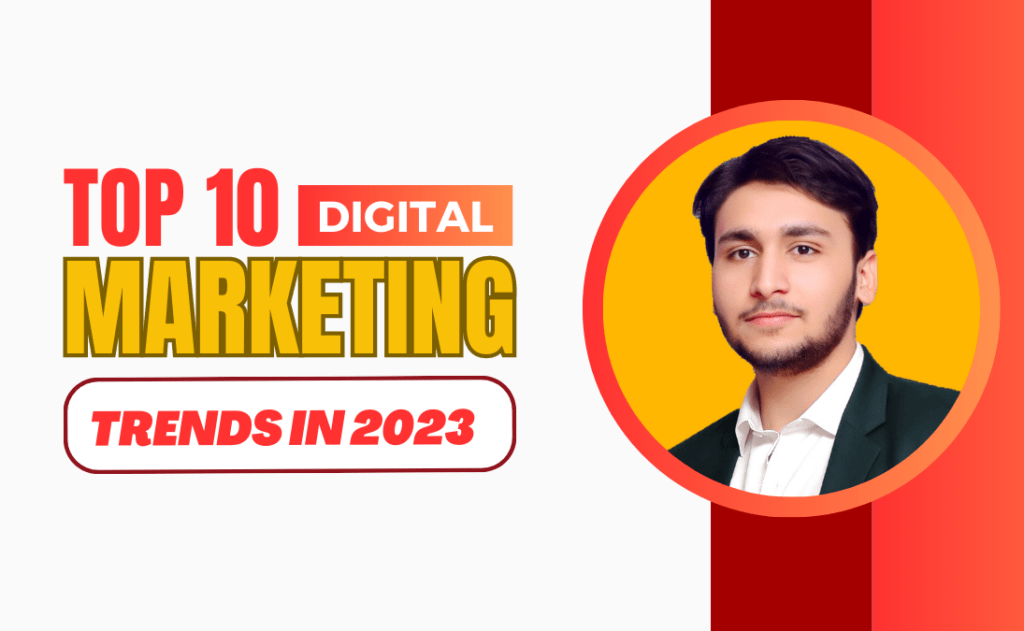Digital Marketing Trends in 2023
In today’s fast-paced digital world, keeping up with the latest trends in digital marketing is essential to stay ahead of the competition. As we move into 2023, several digital marketing trends are expected to gain momentum and shape the industry’s future. In this article, we will explore the top 10 digital marketing trends you need to know in 2023.
Table of Contents
- Introduction
- Trend 1: Artificial Intelligence (AI) in Digital Marketing
- Trend 2: Personalized User Experiences
- Trend 3: Voice Search Optimization
- Trend 4: Interactive Content Marketing
- Trend 5: Video Marketing Continues to Grow
- Trend 6: Social Media Becomes a Key Sales Channel
- Trend 7: Influencer Marketing Matures
- Trend 8: Rise of Micro-Moments
- Trend 9: Augmented Reality (AR) and Virtual Reality (VR)
- Trend 10: Privacy Concerns and Data Security
Trend 1: Artificial Intelligence (AI) in Digital Marketing

Artificial Intelligence (AI) is increasingly being used in digital marketing to analyze customer data and personalize the customer experience. AI can help businesses understand customer preferences and behaviors, and use that information to create targeted marketing campaigns that resonate with their audience.
One way AI is being used in digital marketing is through predictive analytics. Predictive analytics can analyze customer data to determine which products or services a customer is likely to purchase. This allows businesses to tailor their marketing efforts to specific customers, increasing the likelihood of a sale.
Another way AI is being used in digital marketing is through chatbots. Chatbots can provide real-time assistance to customers, automating routine tasks such as appointment scheduling and order tracking. This improves the customer experience and frees up staff to focus on more complex issues.
AI can also be used to analyze social media conversations and sentiment. By analyzing social media conversations, businesses can gain insights into what their customers are saying about their brand and products. This information can be used to improve products, develop new marketing campaigns, and address customer concerns.
In addition to these uses, AI can also be used to automate email marketing and social media posting. By automating these routine tasks, businesses can save time and resources while still maintaining an active presence on social media and keeping in touch with their customers via email.
Overall, the trend of AI in digital marketing is set to continue in 2023 and beyond. Businesses that embrace this technology and use it to create targeted, personalized marketing campaigns will be well-positioned to succeed in the digital marketplace.
Trend 2: Personalized User Experiences

Personalized marketing has become increasingly important as customers expect more tailored experiences from brands. In 2023, businesses can leverage customer data to create targeted and personalized marketing campaigns.
One way to create personalized experiences is through the use of AI and machine learning. By analyzing customer data such as purchase history, browsing behavior, and demographic information, businesses can create customized marketing messages that are tailored to each individual customer. This can help increase engagement and drive sales.
Another way to create personalized experiences is through the use of personalized content. By creating content that is relevant and interesting to specific customer segments, businesses can improve engagement and build stronger relationships with their customers. For example, a fitness apparel brand could create personalized workout plans for customers based on their fitness goals and activity levels.
Personalization can also extend to the overall customer experience, not just marketing campaigns. Businesses can use data and automation to create customized experiences for each customer, such as personalized product recommendations or tailored customer service interactions.
However, it is important to note that personalization must be done in a way that respects customer privacy and data protection laws. Customers must be given the option to opt out of personalized marketing and have control over their personal data.
In summary, personalization is a key trend in digital marketing for 2023. By leveraging customer data, AI and machine learning, and personalized content, businesses can create tailored experiences that improve engagement and build stronger relationships with customers.
Trend 3: Voice Search Optimization

Voice search is growing in popularity and businesses need to optimize their digital marketing strategies to take advantage of this trend. Here are some tips for optimizing for voice search in 2023:
- Focus on natural language: Voice search queries tend to be longer and more conversational than text-based queries. Businesses should focus on creating content that uses natural language and answers common questions customers may have.
- Use long-tail keywords: Long-tail keywords are phrases that are more specific and targeted than general keywords. They are often used in voice search queries and can help businesses rank higher in voice search results.
- Optimize for featured snippets: Featured snippets are the short summaries of content that appear at the top of search results. They are often used as the answer for voice search queries. Businesses can optimize their content to be more likely to be featured in these snippets.
- Optimize for local search: Many voice searches are for local businesses and services. Businesses can optimize their website and local listings to improve their visibility in local search results.
- Improve website speed: Voice search users expect fast results. Businesses can improve their website speed to ensure they are providing a fast and seamless experience for voice search users.
Trend 4: Interactive Content Marketing

Interactive content marketing is a trend that has been growing in popularity in recent years, and it is set to continue in 2023. Interactive content engages the user and provides a more immersive experience compared to static content. Here are some examples of interactive content:
- Quizzes and assessments: These can be used to educate users and provide personalized recommendations based on their answers. They can also be used to generate leads by collecting user information.
- Polls and surveys: These can be used to gather feedback from users and gain insights into their preferences and opinions. They can also be used to generate engagement and create a sense of community.
- Interactive infographics: These can be used to present complex data and information in a more engaging and visual way. Users can interact with the infographic to explore different aspects of the data.
- Augmented reality (AR) and virtual reality (VR): These technologies can be used to create immersive experiences for users, such as product demos and virtual tours.
Interactive content can be used for a variety of purposes, such as:
- Brand awareness: Interactive content can help to differentiate a brand from its competitors and create a memorable experience for users.
- Lead generation: Interactive content can be used to collect user information and generate leads for sales teams to follow up with.
- Customer engagement: Interactive content can create a more engaging experience for users and encourage them to spend more time on a website or social media platform.
When creating interactive content, it’s important to keep the following in mind:
- Purpose: What is the purpose of the interactive content? Is it to educate, inform, or entertain?
- Audience: Who is the target audience for the interactive content? What are their preferences and interests?
- Platform: Where will the interactive content be published? Will it be on a website, social media platform, or mobile app?
- Design: How will the interactive content be designed? What is the user interface like? How will the user interact with the content?
Overall, interactive content marketing is a trend that is set to continue in 2023, and businesses that embrace it can create more engaging and personalized experiences for their customers.
Trend 5: Video Marketing Continues to Grow

Video marketing has been on the rise for several years now, and it shows no signs of slowing down in 2023. Here are some reasons why video marketing will continue to be an important trend:
- Video is a highly engaging and shareable format that can be used to educate, inform, and entertain customers. It can be used to showcase products or services, create how-to guides, and provide valuable insights and advice.
- Video can be used across multiple platforms, including social media, email marketing, and websites. This versatility makes it an essential tool for businesses of all sizes.
- The rise of live video and interactive video formats has made video marketing even more engaging and interactive for viewers. These formats allow for real-time engagement and feedback, creating a more personal and immersive experience for the viewer.
- Video can also be used to improve search engine optimization (SEO). By optimizing video content with relevant keywords, tags, and descriptions, businesses can improve their visibility in search engine results pages (SERPs) and attract more organic traffic to their website.
To make the most of video marketing in 2023, businesses should focus on the following:
- Creating high-quality and engaging video content that aligns with their brand and target audience.
- Optimizing video content for SEO by using relevant keywords, tags, and descriptions.
- Sharing video content across multiple platforms to increase reach and engagement.
- Utilizing new and emerging video formats, such as live video and interactive video, to create more immersive and engaging experiences for viewers.
- Analyzing video performance metrics to measure the success of video marketing efforts and make data-driven improvements.
By leveraging the power of video marketing, businesses can connect with their target audience in more meaningful ways and drive engagement and conversions.
Trend 6: Social Media Becomes a Key Sales Channel

In 2023, social media will continue to be an important aspect of digital marketing. However, it will no longer be just a platform for building brand awareness and engaging with customers. Social media will also become a key sales channel for businesses, with more customers using social media to discover, research, and purchase products and services.
Here are some ways businesses can leverage social media as a sales channel in 2023:
- Social Commerce: Social commerce involves using social media platforms to sell products and services directly to customers. In 2023, more businesses will embrace social commerce and leverage social media to drive sales. Social commerce can be done through features like shoppable posts and in-app purchases on social media platforms like Facebook, Instagram, and Pinterest.
- Influencer Marketing: Influencer marketing will continue to be an effective way for businesses to reach their target audience and drive sales. In 2023, businesses will collaborate with influencers to promote their products and services on social media. Influencer marketing can be particularly effective for businesses in the fashion, beauty, and lifestyle industries.
- Social Media Advertising: Social media advertising will become more sophisticated in 2023, with more businesses leveraging advanced targeting and retargeting capabilities to drive sales. Social media ads can be used to target customers based on their interests, behaviors, and demographics. Additionally, retargeting ads can be used to show ads to customers who have previously interacted with a business on social media.
- Social Listening: Social listening involves monitoring social media conversations for mentions of a brand, product, or service. In 2023, businesses can leverage social listening to identify potential customers and engage with them on social media. By responding to customer inquiries and feedback, businesses can build trust and increase the likelihood of a sale.
Overall, social media will continue to be an important aspect of digital marketing in 2023. By leveraging social media as a sales channel, businesses can drive more revenue and improve their bottom line.
Trend 7: Influencer Marketing Matures

Influencer marketing has been a popular trend in digital marketing for several years, but in 2023, we can expect to see it mature as a marketing strategy. Here are some key points to consider:
- Micro-influencers will become more prominent: As influencer marketing becomes more mainstream, businesses are likely to shift their focus from mega-influencers to micro-influencers. These are social media users with smaller followings, but who have highly engaged and loyal audiences. Working with micro-influencers can be more cost-effective and can lead to more authentic and genuine content.
- Influencer marketing will become more regulated: As the use of influencer marketing grows, so too will the need for transparency and accountability. In 2023, we can expect to see more regulations put in place to ensure that influencers disclose their relationships with brands and that the content they produce is authentic and truthful.
- Brands will look beyond social media: While social media will remain a key platform for influencer marketing in 2023, we can expect to see brands explore other channels. For example, partnering with influencers for podcasts, webinars, or even in-person events can help brands reach new audiences and build more meaningful relationships with their customers.
- Long-term partnerships will become more common: In 2023, we can expect to see more brands focus on building long-term partnerships with influencers rather than just one-off campaigns. This can help brands create more consistent and sustainable content, as well as build stronger relationships with their target audience.
- Brands will prioritize authenticity: In 2023, we can expect to see brands prioritize authenticity in their influencer marketing campaigns. This means working with influencers who align with their brand values and who create content that feels genuine and authentic to their audience.
Overall, in 2023, we can expect to see influencer marketing become a more mature and established marketing strategy. Brands will need to focus on building meaningful relationships with influencers and creating authentic and valuable content for their target audience.
Trend 8: Rise of Micro-Moments

With the increasing use of mobile devices, consumers are turning to their phones to research products, make purchasing decisions, and solve problems on-the-go. These brief, intent-driven interactions are known as micro-moments.
To take advantage of micro-moments, businesses need to understand the types of queries that people make during these interactions and create content that addresses those queries. This means creating short, concise, and informative content that can be easily consumed on mobile devices. Some ways to optimize for micro-moments include:
- Creating quick answer content: Providing short answers to common questions can help businesses appear in search results for relevant queries.
- Optimizing for local search: People often use their phones to search for nearby businesses. Optimizing for local search can help businesses appear in these types of queries.
- Using video: Short, engaging videos can capture people’s attention and provide valuable information in a quick and easy-to-consume format.
- Providing personalized recommendations: Using customer data to provide personalized recommendations can help businesses provide a more relevant and helpful experience for customers in micro-moments.
Overall, the rise of micro-moments highlights the importance of providing relevant and useful information to customers in a quick and easy-to-consume format. By optimizing for micro-moments, businesses can improve their visibility and provide a better experience for their customers.
Trend 9: Augmented Reality (AR) and Virtual Reality (VR)

Augmented Reality (AR) and Virtual Reality (VR) are becoming increasingly important in the digital marketing landscape. AR and VR can be used to create immersive experiences that engage customers and drive sales. Here are some ways that businesses can leverage AR and VR in their digital marketing strategies in 2023:
- Product visualization: AR and VR can be used to showcase products in a more interactive and engaging way. For example, a furniture company could use AR to allow customers to see how a piece of furniture would look in their home before making a purchase.
- Enhanced shopping experiences: AR and VR can be used to create more immersive and interactive shopping experiences. For example, a fashion retailer could use AR to allow customers to try on clothes virtually or see how different outfits would look together.
- Virtual events: AR and VR can be used to create virtual events that allow customers to experience a brand in a new way. For example, a car company could use VR to allow customers to take a virtual test drive of a new vehicle.
- Gamification: AR and VR can be used to create interactive games that engage customers and build brand awareness. For example, a food company could create a VR game that allows customers to explore different recipes and ingredients.
- Enhanced training: AR and VR can be used to create more engaging and interactive training programs. For example, a healthcare company could use VR to simulate medical procedures or train employees on safety protocols.
Overall, AR and VR offer exciting opportunities for businesses to create more immersive and engaging experiences for customers. As these technologies continue to evolve, businesses that incorporate AR and VR into their digital marketing strategies will be well-positioned to stand out in a crowded market.
Trend 10: Privacy Concerns and Data Security

As the amount of data being collected by businesses continues to increase, so do concerns about privacy and data security. In 2023, consumers are becoming more aware of the data being collected about them and are demanding more control over how that data is used.
To address these concerns, businesses must prioritize data privacy and security in their digital marketing efforts. Here are some ways they can do so:
- Implement data security measures: Businesses can take steps to secure their data and protect against data breaches by implementing security protocols such as encryption, access controls, and intrusion detection systems.
- Be transparent about data collection and use: Businesses should be clear and transparent about the data they collect and how they use it. This includes providing consumers with clear opt-in and opt-out options, as well as clear privacy policies.
- Respect consumer preferences: Consumers are increasingly demanding more control over their data. Businesses should respect consumer preferences and only collect and use data that is necessary for their marketing efforts.
- Work with third-party vendors: Many businesses work with third-party vendors to collect and analyze data. It’s important for businesses to vet these vendors and ensure they have appropriate data privacy and security protocols in place.
- Be prepared for data breaches: Despite best efforts, data breaches can still occur. Businesses should have a plan in place to respond to a data breach and mitigate any damage that may occur.
Overall, businesses that prioritize data privacy and security in their digital marketing efforts will be better positioned to build trust with consumers and stay ahead of emerging privacy regulations.



